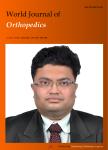Three predictive scores compared in a retrospective multicenter study of nonunion tibial shaft fracture
作者机构:Clinical OrthopedicsDepartment of Clinical and Molecular ScienceUniversitàPolitecnica Delle MarcheAncona 60126Italy Department of Information and EngineeringUniversitàPolitecnica delle MarcheAncona 60121Italy
出 版 物:《World Journal of Orthopedics》 (世界骨科杂志(英文版))
年 卷 期:2024年第15卷第6期
页 面:560-569页
学科分类:1002[医学-临床医学] 100210[医学-外科学(含:普外、骨外、泌尿外、胸心外、神外、整形、烧伤、野战外)] 10[医学]
主 题:Trauma Bone Tibial fracture Nonunion Scores Prediction model
摘 要:BACKGROUND Delayed union,malunion,and nonunion are serious complications in the healing of *** the risk of nonunion before or after surgery is *** To compare the most prevalent predictive scores of nonunion used in clinical practice to determine the most accurate score for predicting *** We collected data from patients with tibial shaft fractures undergoing surgery from January 2016 to December 2020 in three different trauma *** this retrospective multicenter study,we considered only fractures treated with intramedullary *** calculated the tibia FRACTure prediction healING days(FRACTING)score,Nonunion Risk Determination score,and Leeds-Genoa Nonunion Index(LEG-NUI)score at the time of definitive *** Of the 130 patients enrolled,89(68.4%)healed within 9 months and were classified as *** remaining patients(n=41,31.5%)healed after more than 9 months or underwent other surgical procedures and were classified as *** calculation of the three scores,LEG-NUI and FRACTING were the most accurate at predicting *** LEG-NUI and FRACTING showed the best performances by accurately predicting union and nonunion.



